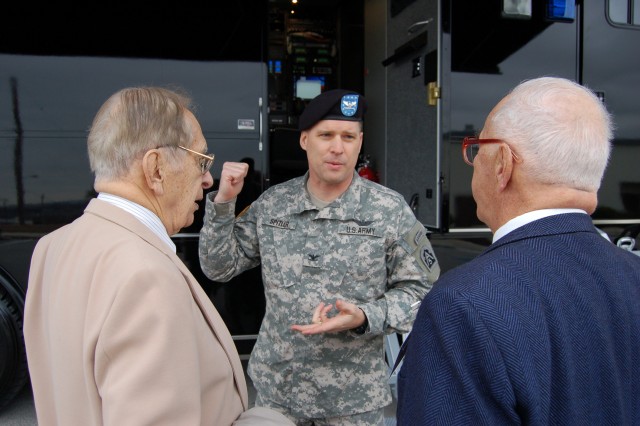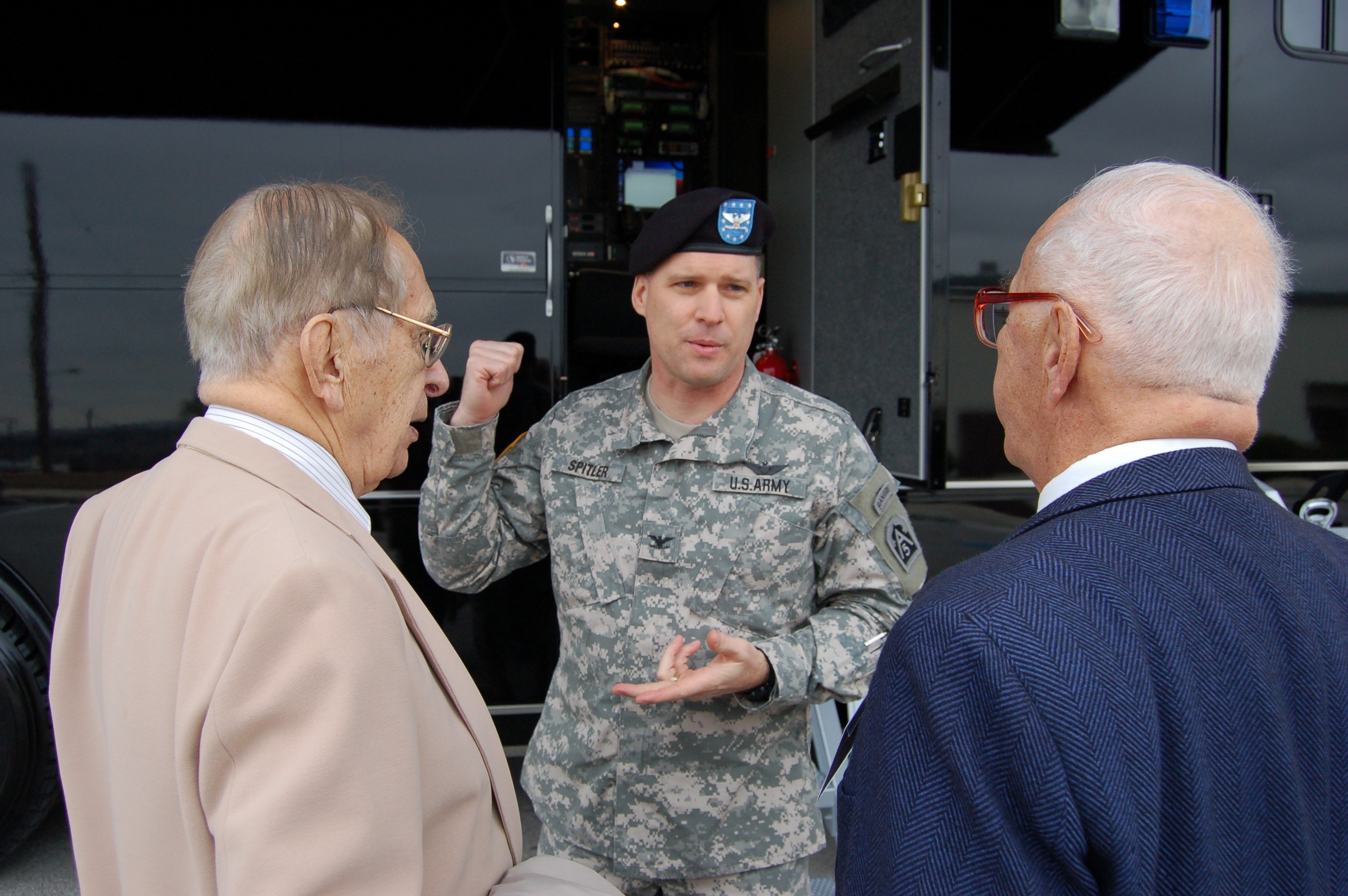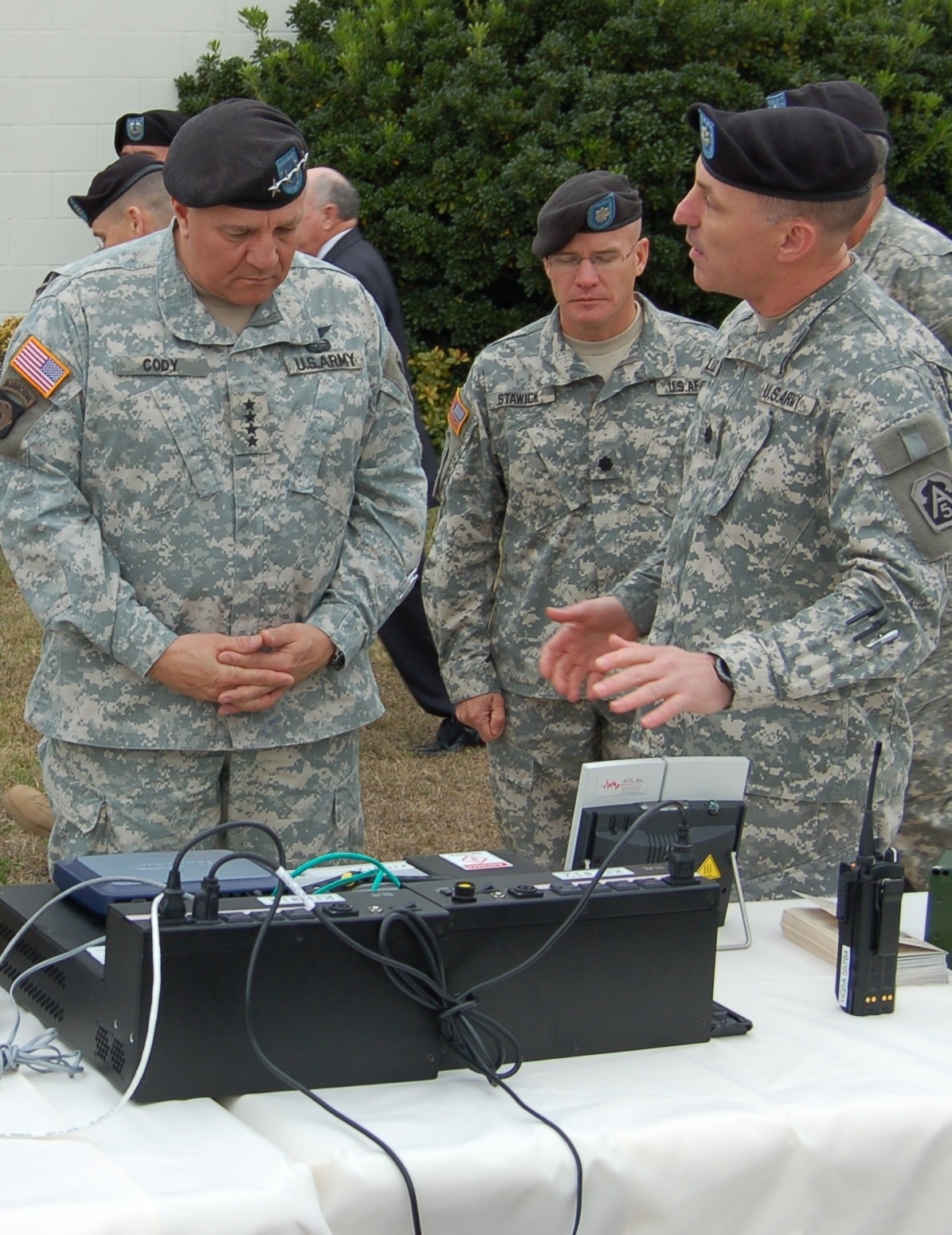The Army's Vice Chief of Staff Gen. Richard Cody and a host of retired general officers visited U.S. Army North Jan. 29 to receive an update on the command and to look at its newest technologies.
About 100 retired general officers and their spouses attended the Retired General Officers Conference held annually at Fort Sam Houston, Texas.
The U.S. Army North Commander welcomed the group.
"Since you were here last year, U.S. Army North has experienced a tremendous amount of growth, matured in its ability to conduct its mission and reached full operational capability in mid October last year," said Lt. Gen. Tom Turner. "We are rapidly becoming the Department of Defense's premier land-based homeland defense response force."
The command is the Army component of U.S. Northern Command and traces its lineage to the Fifth United States Army. The U.S. Army North mission includes homeland defense, support of civil authorities and theater security cooperation activities with the armies of Canada and Mexico.
The Army North deputy commander told the group that the command has conducted or participated in several major exercises that simulated a variety of natural and manmade disasters.
Brig. Gen. Mark Graham stressed the importance of these events to ensuring readiness at all levels - from the Defense Coordinating Officers who work day-to-day in 10 regions across the United States, to the two deployable Operational Command Posts and Main Command Post.
"It's too late to figure this out on the fly," Graham told the group. "Clearly we've got to do it beforehand, practice it and meet the federal, regional and state planners and responders. We don't get a second swing at the ball - if something catastrophic occurs, we've got to be ready immediately."
Graham explained that the command's Defense Coordinating Officers are the first responders when the federal government requests Department of Defense support. During a disaster, these officers and a small staff deploy close to the site, validate requests for assistance and command the active-duty forces responding to the incident.
During a larger event, U.S. Army North can deploy up to two operational command posts, each headed by a two-star general, to command responding active duty forces. With augmentation, the command posts may expand to joint task forces. U.S. Army North has a number of enduring missions, Graham added. These include conducting the Defense Support of Civil Authorities course, which is a three-phased, strategic-level course attended by military and civilian consequence managers across the United States.
This is the first time that the Army's Vice Chief has addressed the group since the meetings began in 1992. Cody then joined the general officers in touring the new U.S. Army North communication and command and control vehicles - the Emergency Response Vehicle, the Sentinel and the Super Sentinel.
In addition, the command trains National Guard teams who act as first responders to suspected chemical, biological or other incidents involving weapons of mass destruction. At least one of these Weapons of Mass Destruction-Civil Support Teams is located in each state. The Vice Chief of Staff also took the opportunity to update the group on the state of the Army, discussing topics such as manning and equipping the force, the deployment of troops to Iraq, and some of the threats facing the nation. "I'm absolutely impressed," Cody said.
"It's all about command and control in this business."
Seeing pictures (of these vehicles) just doesn't do them justice." Each vehicle provides a vast array of deployable secure and nonsecure communications capability ranging from satellite telephone, radio, computer and internet access.
The vehicles also enhance interoperability by allowing different agencies to talk to one another."Communication is critical during an incident," said Jeffrey Chase, a network manager for U.S. Army North. "During an event, our vehicle can enable first responders to talk to each other and to federal responders regardless of what frequency they're on or the type of equipment they're using."
Retired Gen. Ralph Haines said he was impressed by what he saw. He recalled that early in his career as a cavalryman, he commanded his troops on horseback using arm signals. "I think the equipment is tremendous - obviously a big step forward," he said.
Haines, a former Vice Chief of Staff, said that, at age 93, he is the oldest living general on the rolls of the United States Army. Because he lives close to Fort Sam Houston, he said he frequently visits Soldiers who have been injured in combat. In fact, while at the conference, the retired general officers attended the opening of the Center for the Intrepid, a new facility at the Brooks Army Medical Center designed to treat severely wounded service members. "Visiting the Soldiers charges your batteries - they're great young men and women," Haines said.
"You can talk about this generation any way you want, but I'm a great defender of them. I think they're subjected to many, many more temptations and stresses and things than we were, but they're still willing to respond." His comments echoed the closing remarks that Cody had made to the group. "When I spoke to you today, I talked about some of the challenges we have in the Army, but one challenge we don't have is strength," he said. "Your Soldiers are strong, and we are going to keep giving them the best leadership we can. Thanks a lot for what you do."




Social Sharing